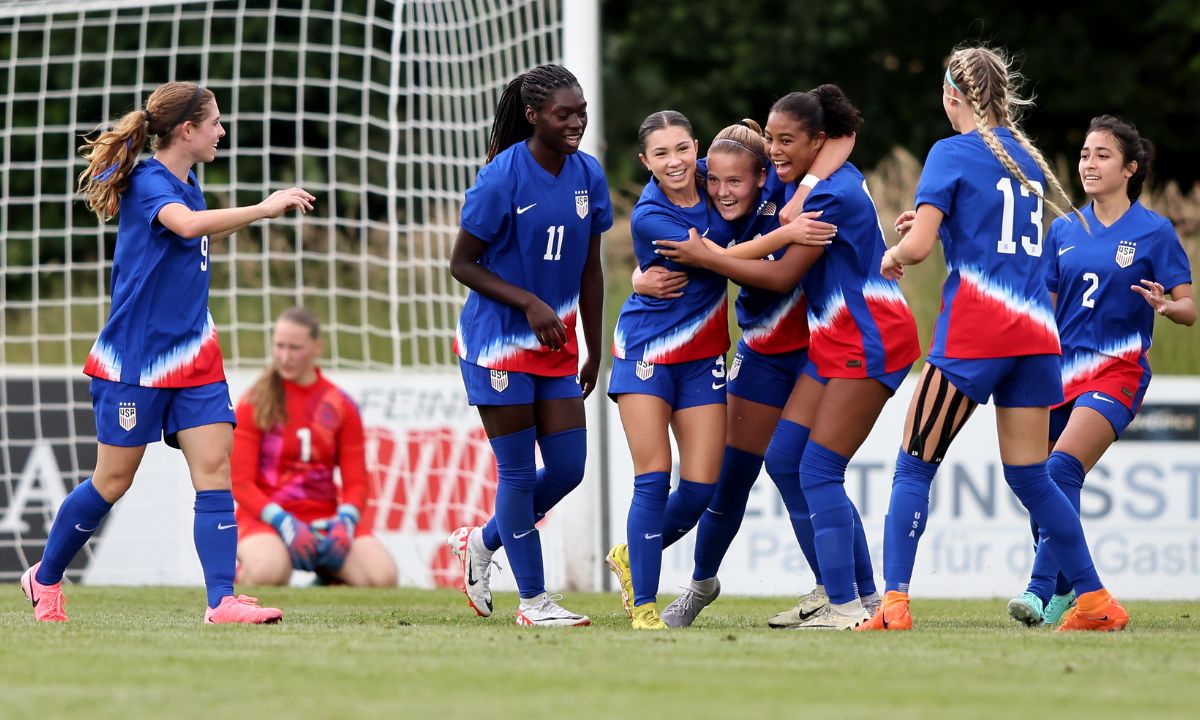The Most Overlooked Classroom In Every District
Carone: Youth sports are considered just a physical outlet for kids. What we’re overlooking is the depth of learning and development happening there.

Get stories like this delivered straight to your inbox. Sign up for The 74 Newsletter
Each year, schools across America spend millions of dollars to boost test scores, implement social-emotional learning programs and help kids learn to regulate their emotions.
But what if there was a giant, 60-million seat classroom we keep overlooking?
What if there was already a classroom where students are learning how to lead, how to fail and keep trying and how to handle themselves when things don’t go their way?
A place where teamwork wasn’t just a word on a post but rather something kids had to develop and live out in real time?
Youth sports represent that classroom. For decades, youth sports have been considered just a physical outlet that kids participated in to stay healthy and be active. What’s often overlooked is the depth of learning and development already happening within athletic environments.
According to the Aspen Institute’s Project Play, an estimated 54% of all kids aged 6-17 participate in some form of youth sports every year. In raw numbers, that’s over 60 million children in the U.S. engaging in organized athletics every year. Sports are embedded in the lives of American youth.
With over half of our students participating in sports each year, we have the opportunity to treat their involvement as more than just an add-on. Instead, what if educators and parents viewed sports as another environment where real learning can take place?
While sports should never replace academics, they should have a place at the table to help kids develop the tools they need to be successful adults.
Before I go any further, I need to name the challenge schools are facing: Administrators, teachers, and coaches are making impossible decisions because of a gross lack of funding. The work already being done is nothing short of heroic.
This conversation isn’t about funding. It’s about mindset. Too often, we pit educational tools against each other: arts vs. athletics, STEM vs. P.E. But what if they could work together?
Some students thrive in traditional classroom settings. My kids fall into that group. School has always come naturally to them. But when the first time they stepped on a soccer field, they had to wrestle with failure in new ways school hadn’t required.
Because their academics had felt easy, my kids didn’t know how to respond when things didn’t come easily in sports. While they were praised for their success in school, their failure on the field brought critique and discomfort. At first, they shut down when they didn’t get it right. They would get frustrated and self-critical, claiming, “I’ll never be able to do this!” Then, over time, they learned the lesson we hope every kid learns: They can do hard things if they stick with it.
For other students, the process works in reverse. While they might struggle in the classroom, they light up under the lights. The field becomes the first place they feel confident, focused, and successful. If youth sports were viewed as a partner to education, these students could learn to apply the mindset they’ve already developed through sport to their academics.
The kind of development educators often hope to foster in a classroom is already happening organically on fields and courts. It’s easy to dismiss these moments as feel-good stories, but they’re actually meaningful learning experiences. Imagine what could happen if schools were to leverage that development and apply it to our classrooms.
Schools don’t need to choose between academics and athletics. But they also shouldn’t pretend that integration will be easy.
To do this well, it will take coaches who care more about kids than win-loss records. Coaches who understand they’re shaping people, not just players.
It will take teachers who can connect what happens on the field with what’s being taught in the classroom. Teachers who are willing to leverage the emotional growth sports often bring out.
And it will take administrators who can walk the tightrope of budget constraints, parental expectations, and student needs while still finding a way to lead with intentionality.
This isn’t about building a sports-first system. It’s about enhancing our student-first system in a way that recognizes how different environments can shape a child while treating each environment with the respect and thoughtfulness it deserves.
When we dismiss sports as something kids do outside of school, we risk missing one of the most impactful classrooms where kids are already discovering who they are, developing emotional resilience, and learning how to work hard. We also lose the opportunity to reinforce the growth already happening. And we leave too many students without the tools they need in the classroom.
If the goal is to raise kids who can navigate challenges and keep growing when things get hard, we can’t afford to overlook the role sports already play in the lives of our students. Not as competition to the classroom, but as a partner.
Get stories like these delivered straight to your inbox. Sign up for The 74 Newsletter

;)
